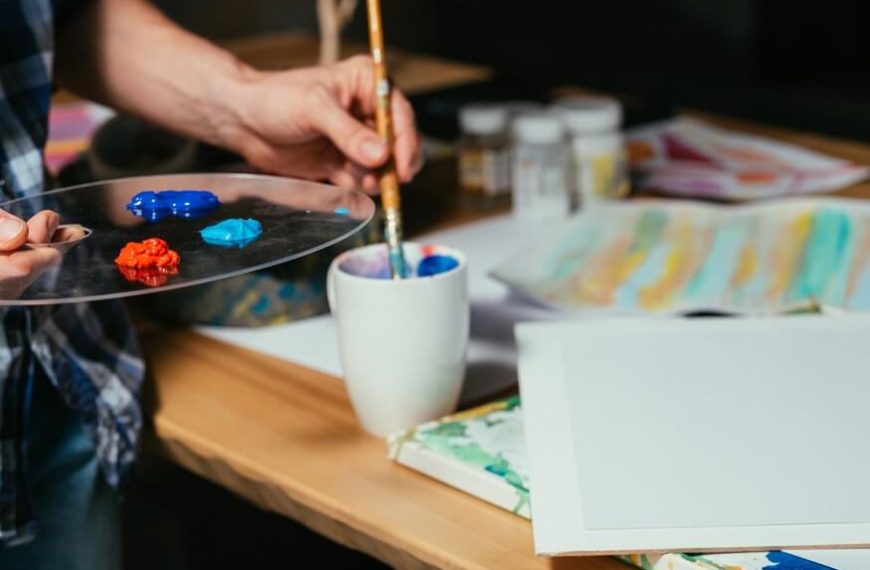Kids love art! It is a powerful form of expression that surpasses boundaries, allowing them to communicate and connect with the world around them. Well, the process of creating art, often referred to as the “process art,” is a journey of self-discovery, exploration, and skill development.
In essence, process art is all about the experience, rather than the final outcome, providing young learners with the opportunity to be themselves, make choices of their own and have the freedom to be creative in a way that suits their academic growth.
So, keep reading to delve into what the art process entails and the incredible benefits it offers to children. Additionally, we will provide some simple and engaging process art activities for kids to spark their creativity.
Understanding the Art Process:
The art process encompasses the entire journey of creating, experimenting, and expressing oneself through various artistic mediums. Unlike traditional art, which may prioritise the end result, process art emphasises the importance of the creative journey. It encourages children to focus on the experience of making art rather than producing a perfect piece.
Benefits of Process Arts for Kids:
- Fostering Creativity:
- Building Confidence:
- Enhancing Motor Skills:
- Promoting Emotional Expression:
- Embracing Mistakes:
Process arts encourage children to think outside the box, explore new ideas, and express their imagination. By allowing freedom in the creative process in children they develop a b sense of creativity that extends beyond the art studio into other aspects of their lives.
As children engage in the art process, they learn to trust their intuition and make decisions independently. This sense of autonomy boosts their self-esteem and confidence, helping them tackle challenges with a positive mindset.
From squeezing paint bottles to manipulating clay, process art activities promote the development of fine and gross motor skills. These activities involve a range of movements that contribute to the refinement of coordination and control.
Art is a powerful outlet for emotional expression. Through process arts, children can convey their feelings, thoughts, and experiences in a safe and constructive manner, promoting emotional well-being.
Process arts teach children that mistakes are an integral part of the learning process. Embracing mistakes as opportunities for growth fosters resilience and a willingness to take risks in other areas of life as well.
Difference Between Process Art and Product Art
The distinction between process art and product art lies in the emphasis placed on the creative journey versus the final outcome. Process art focuses on the experience of creating, encouraging individuals, especially children, to explore and experiment with materials freely. The emphasis is on self-expression, discovery, and the unique journey each artist takes.
On the other hand, product art prioritises the end result, often following specific guidelines or instructions to achieve a predetermined outcome. While product art can also be enjoyable and skill-building, it places a greater emphasis on the aesthetics of the final piece.
|
Aspect |
Process Art |
Product Art |
|
Focus |
Emphasises the creative journey and experience. |
Emphasises the final result or finished product. |
|
Goal |
Encourages self-expression and experimentation. |
Aim for a predetermined, aesthetically pleasing result. |
|
Creativity |
Prioritises free-thinking and imaginative exploration. |
May limit creativity to achieve a specific outcome. |
|
Mistakes |
Viewed as opportunities for learning and growth. |
May be perceived negatively, as it can affect the final product. |
|
Age Suitability |
Suitable for all ages, fostering creativity. |
May be more structured, depending on the age and skill level. |
|
Material |
Varied and open to interpretation. |
Specific materials to achieve a predetermined objective. |
How can you teach process art at home?
Here are some practical tips to incorporate process art into your home environment:
- Provide a Variety of Art Supplies:
- Offer Open-Ended Prompts:
- Encourage Sensorial Exploration:
- Display and Discuss Artwork:
- Attend Art Exhibitions:
Offer a diverse range of art materials such as paints, markers, crayons, coloured pencils, glue, paper, cardboard, fabric scraps, and recyclables. Having a variety of supplies encourages exploration and creativity.
Instead of giving specific instructions, provide open-ended prompts or questions to stimulate creative thinking. For example, you can ask, “What do you think will happen if we mix these colours?” or “How can you use these materials to create something new?”
Include sensory elements into process art activities. Allow your child to explore different textures, temperatures, and consistencies of materials. This not only enhances the creative process but also engages the senses.
Display your child’s artwork proudly and discuss it together. Ask open-ended questions about their choices, inspirations, and feelings during the creative process. This not only builds confidence but also enhances communication skills.
You can visit local art exhibitions, museums, or community events. Exposure to different forms of art can inspire creativity and broaden your child’s understanding of artistic expression.
Simple Process Art Activities for Kids
Bubble Wrap Printing:
- Materials: Bubble wrap, paint, paper
- Instructions: Dip bubble wrap into the paint and press it onto paper. Peel off the bubble wrap to reveal a unique print.
String Painting:
- Materials: String, paint, paper
- Instructions: Dip a piece of string into the paint, lay it on paper, and fold the paper in half. Pull the string out to create a mesmerising symmetrical design.
Nature Collage:
- Materials: Leaves, twigs, flowers, glue, paper
- Instructions: Collect natural materials and create a collage on paper using glue. This activity connects children with the outdoors while fostering creativity.
Marble Painting:
- Materials: Shallow box, paper, marbles, paint
- Instructions: Place a piece of paper in a shallow box, add a few drops of paint, place marbles in the box, and let the child tilt and shake the box to create a unique marble-painted masterpiece.
Sensory Painting:
- Materials: Pudding, yoghurt, food colouring, paper
- Instructions: Mix different colours of edible substances and let your child explore painting with their fingers or brushes. This activity engages both the sense of touch and sight.
The process art activities shared here are not just about creating beautiful pieces, they are about promoting their exploration, self-articulation, and the sheer joy of making. By encouraging your child to dive into the artistic process, you are laying the foundation for a lifelong appreciation of creativity, and resilience.
As you undertake this artistic journey with your child, consider the enriching environment provided by EuroKids, a leading play school dedicated to nurturing young minds. At Eurokids, we understand the importance of a holistic learning experience that extends beyond the classroom. With a focus on fostering creativity, cognitive development, and social skills, we offer a stimulating environment where children can thrive. Visit us today, and invest in your child’s future.
















